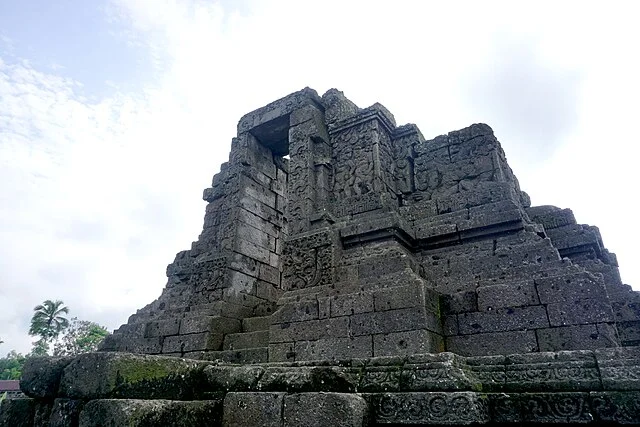Jago Temple is a significant Hindu temple located in East Java, Indonesia. Built during the Majapahit Empire, it stands as an example of religious and cultural integration in Java from the 13th to 15th centuries AD. The temple is renowned for its intricate carvings, which depict both Hindu and Buddhist iconography, and its architecture reflects the blend of these two religious traditions during this period.
Get your dose of History via Email
Historical Background
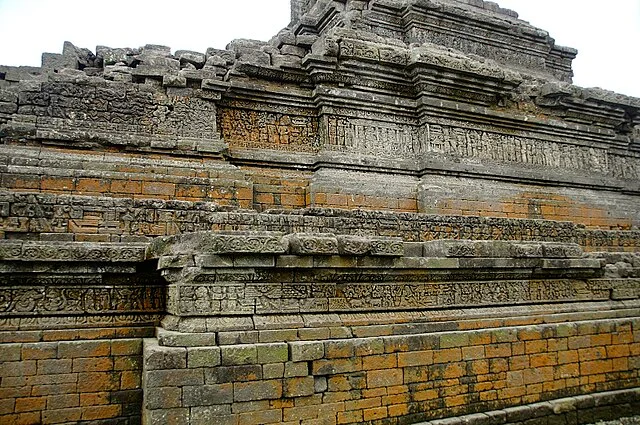
The Majapahit Empire, which ruled Java and surrounding areas from the late 13th century to the early 16th century AD, was one of Southeast Asia’s most influential empires. This empire fostered a unique cultural synthesis, blending Hindu and Buddhist traditions. Built around the late 13th or early 14th century AD, Jago Temple reflects this era’s religious openness and cultural sophistication.
The temple was likely constructed during the reign of King Kertanegara, one of the Majapahit Empire’s most notable rulers. King Kertanegara promoted religious tolerance and is thought to have been a follower of both Hinduism and Buddhism. This cultural approach influenced temple art and architecture, including Jago Temple, making it a blend of both religious styles.
Architectural Features
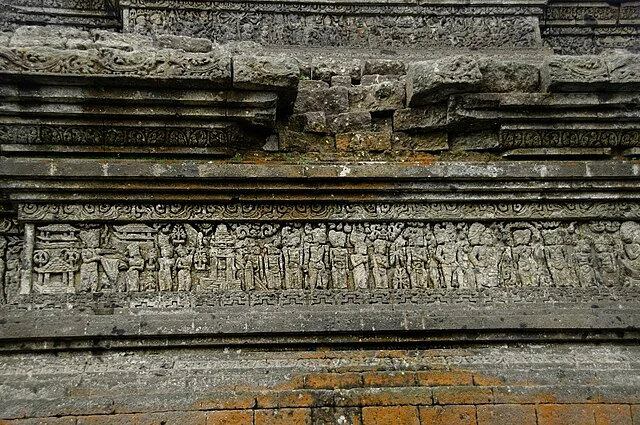
Jago Temple’s architecture is distinct in its multi-level design. It is constructed from andesite stone, a material often used in Java’s ancient temples. The structure rises in a series of terraces, a design choice that may have represented the sacred Mount Meru, central in both Hindu and Buddhist cosmology.
Each level of the temple is decorated with bas-reliefs and carvings, showcasing the artistic skill of the time. These carvings are primarily Hindu in subject, but they incorporate Buddhist elements as well. Notable reliefs depict scenes from the Mahabharata, Ramayana, and other Hindu epics. Some carvings feature Bodhisattvas, symbols of enlightenment in Buddhism, underscoring the religious syncretism of the period.
Symbolism in the Reliefs
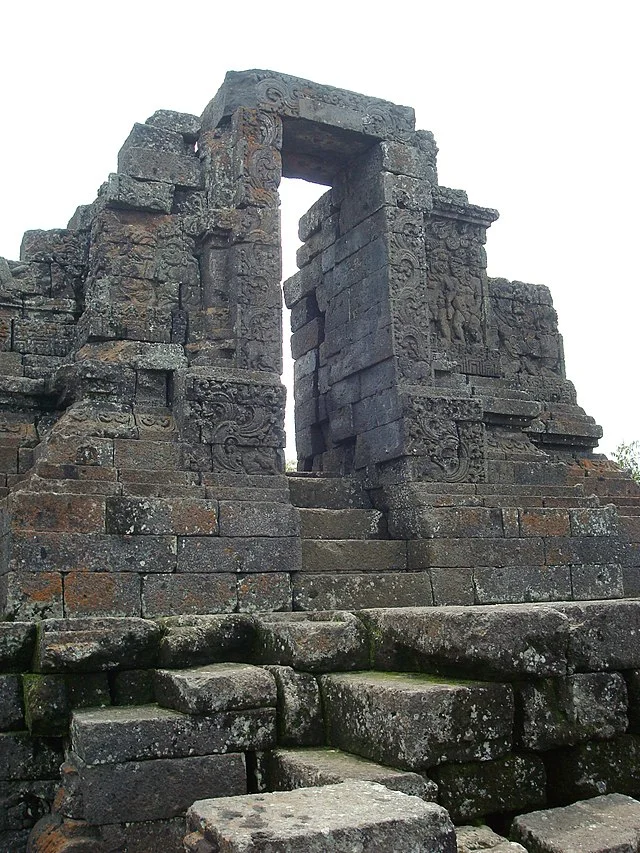
The temple’s carvings serve as more than mere decoration; they carry deep symbolic meanings. For instance, scenes from the Ramayana likely represent the triumph of good over evil, a central theme in Hindu teachings. The Buddhist Bodhisattva carvings, on the other hand, emphasize compassion and wisdom, core tenets of Buddhism.
This symbolism suggests that Jago Temple was more than a place of worship. It was a center of spiritual learning and reflection, encouraging devotees to embrace both Hindu and Buddhist ideals.
Restoration and Preservation
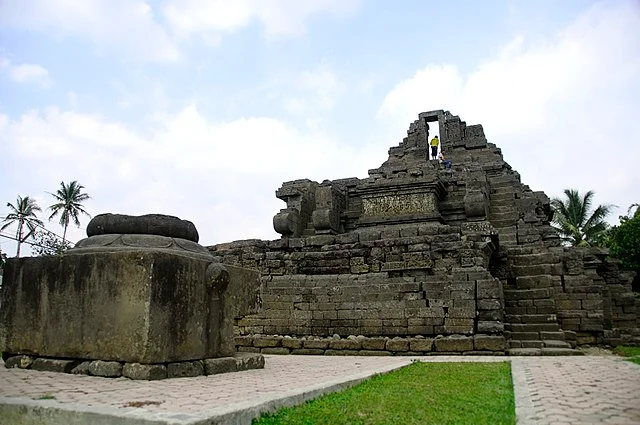
Over centuries, Jago Temple experienced natural wear and damage. Restoration efforts began during the colonial period in the early 20th century and have continued intermittently. However, some parts of the temple remain incomplete due to limited resources and the challenges of preserving ancient stone structures in a humid, tropical environment.
Today, Jago Temple is protected as a cultural heritage site by the Indonesian government. Ongoing conservation efforts aim to preserve its unique historical and artistic value. However, balancing preservation with accessibility for visitors remains a challenge.
Religious and Cultural Significance
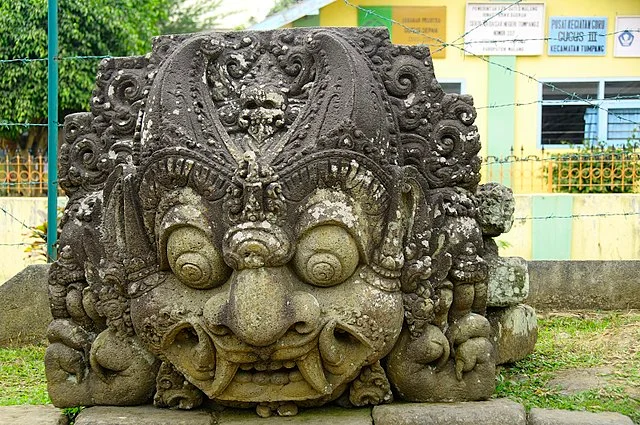
Jago Temple represents more than a historic structure; it embodies the religious and cultural syncretism that characterized the Majapahit period. Its design and carvings reflect the empire’s inclusive approach to religion, which embraced diverse beliefs and fostered a peaceful coexistence of Hinduism and Buddhism. This approach had a lasting impact on Javanese culture, influencing not only architecture but also art, literature, and religious practices.
For historians and archaeologists, Jago Temple is invaluable for understanding Java’s religious landscape during the Majapahit era. Its intricate carvings and blend of architectural styles provide insights into how ancient Javanese society viewed spirituality, tolerance, and cultural exchange.
Conclusion
Jago Temple is a remarkable example of the Majapahit Empire’s cultural and religious openness. Its intricate carvings, multi-level design, and religious iconography reveal a period of coexistence and integration between Hinduism and Buddhism in Java. While restoration efforts face challenges, the temple remains an enduring symbol of Java’s rich historical and cultural legacy, offering invaluable insights into the spiritual life of the Majapahit Empire.
Source:

